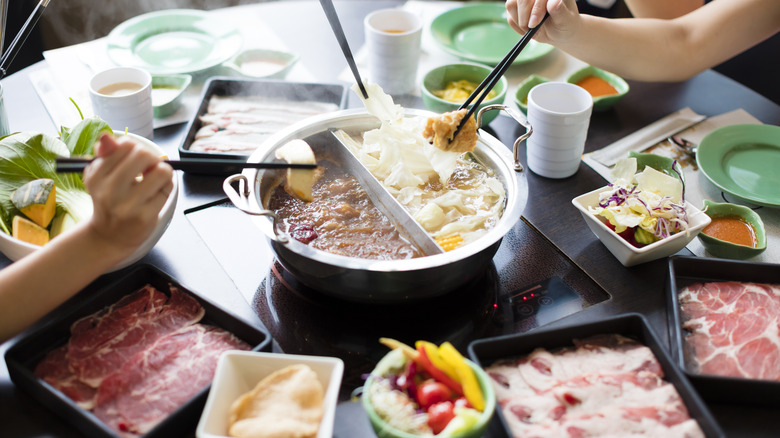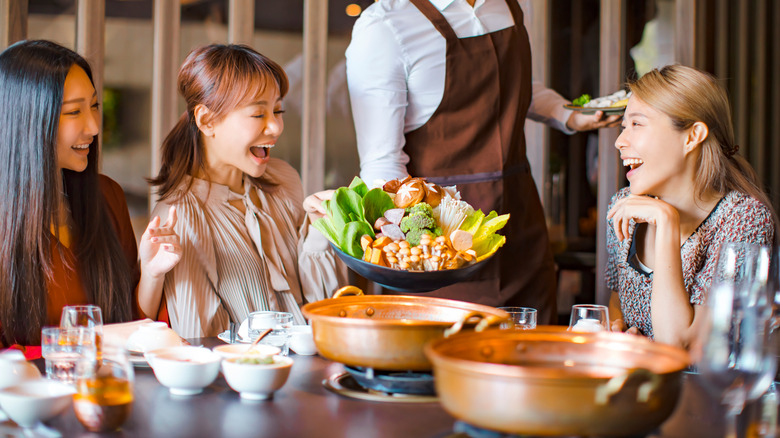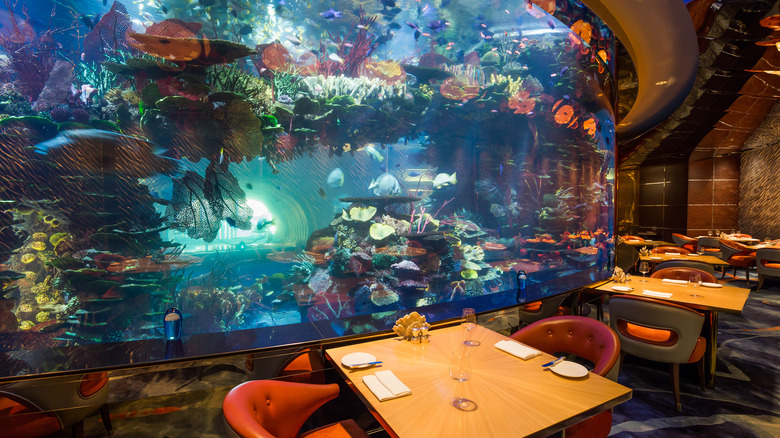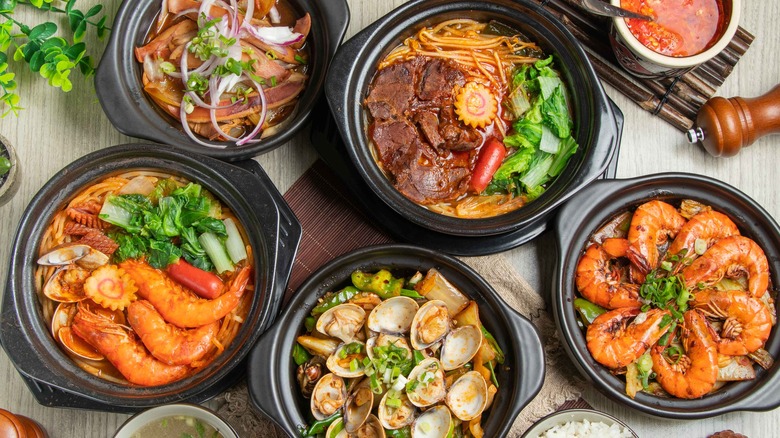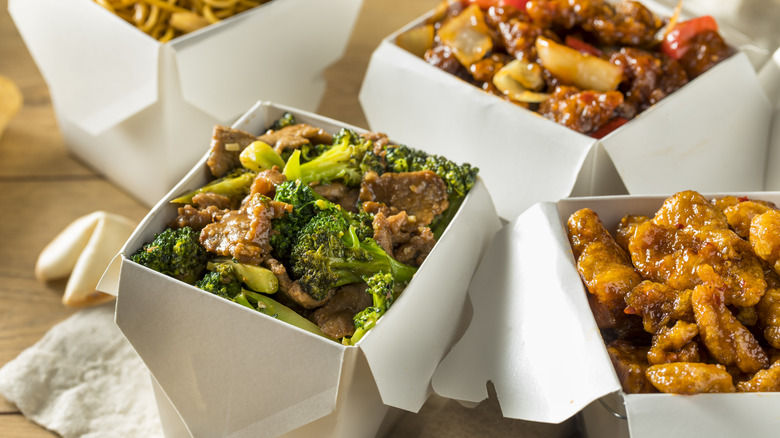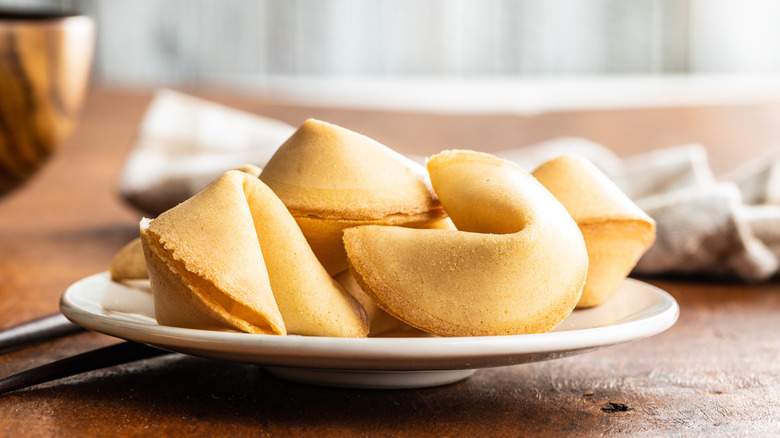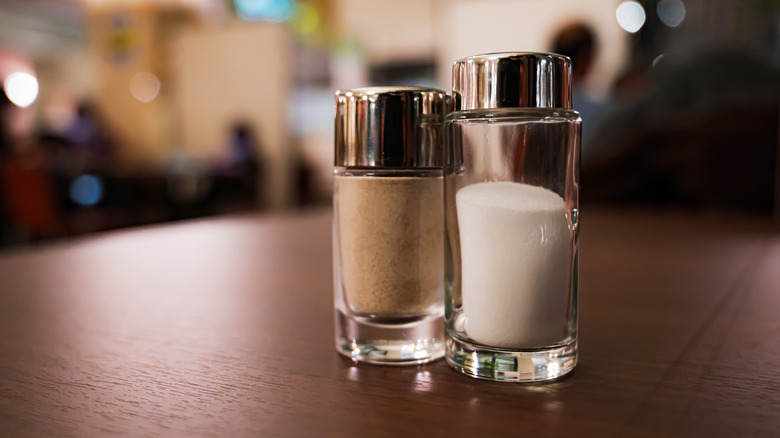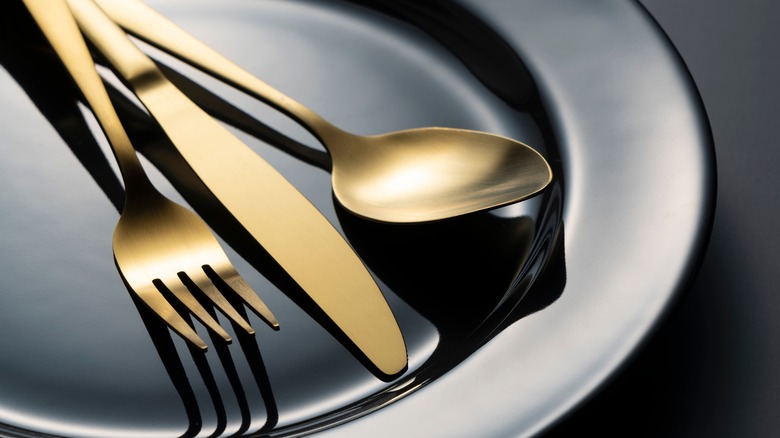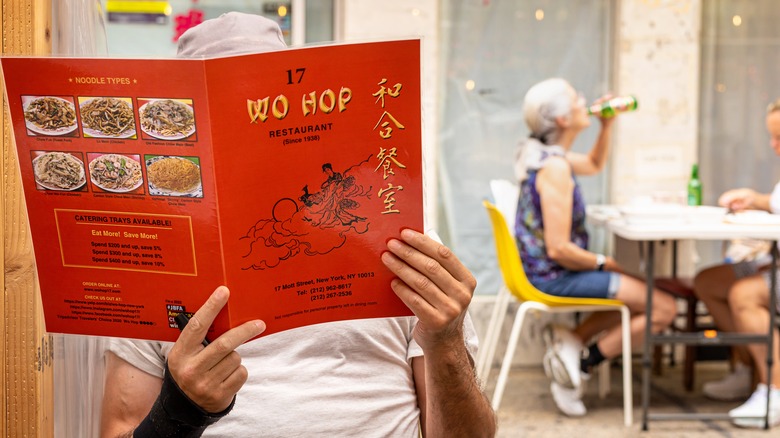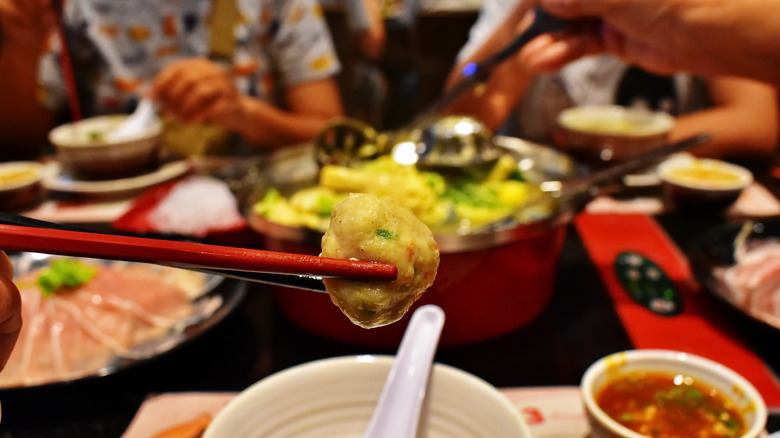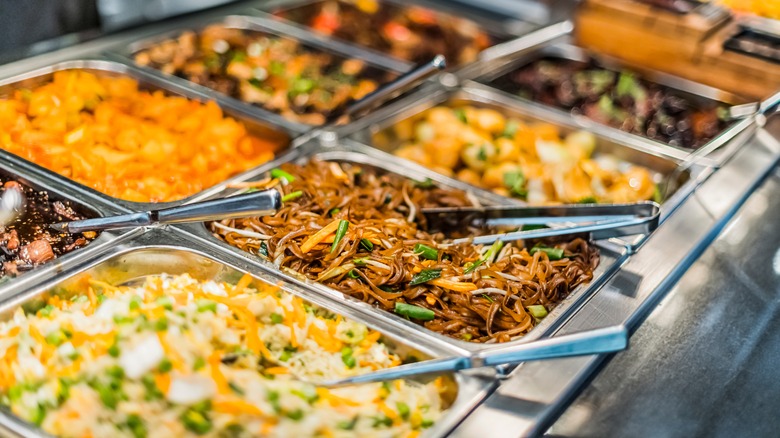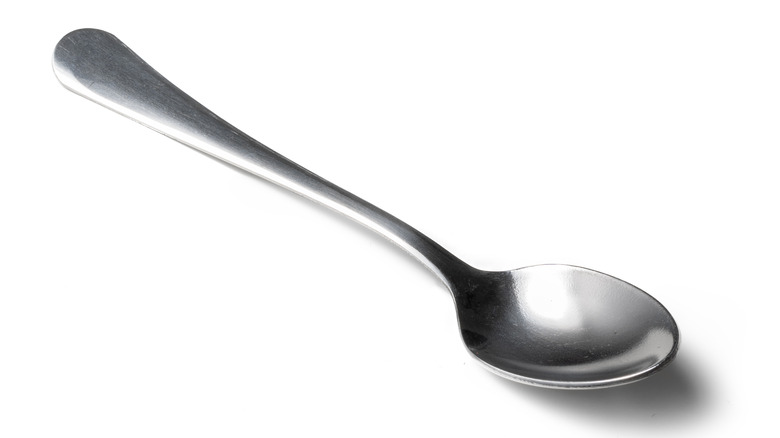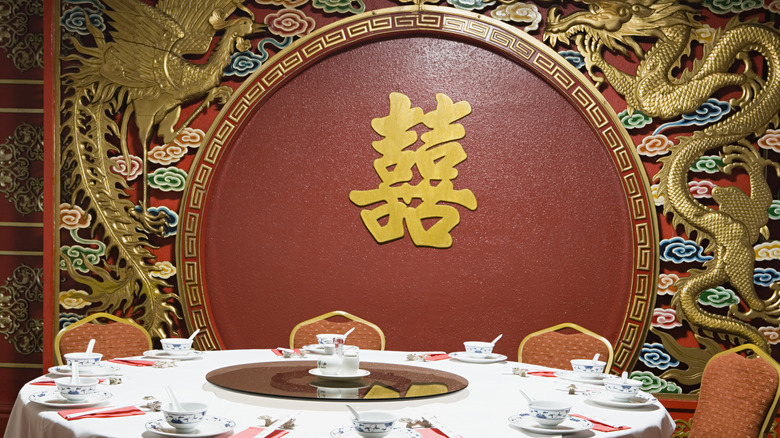Red Flags To Look Out For At Chinese Restaurants
Chinese restaurants have been a fixture in America since the mid-1800s, when immigrants to the U.S. began supplying mine workers with food and other essentials. This was genuine Chinese cuisine, and often preferred to local alternatives given the better hygiene levels and kinder price point. But following the Chinese Exclusion Act of 1882, menus were changed in order to appeal to a wider palate, and Chinese-American cuisine was born.
These days, there's no shortage of Chinese restaurants in the U.S., with more than 24,000 currently in operation. However, as any fan of Asian cuisine will know, there's a world of difference between genuine Chinese food and its westernized alternative. Those looking for the real deal will know how difficult it can be to tell the two types apart before the food itself arrives, but a little knowledge goes a long way in this particular arena. Arm yourself with these red flags to look out for at Chinese restaurants and you'll be giving yourself the very best chance of tasting the authentic cuisine you went in for.
Look at the patrons
Before you even take a seat and grab a menu to peruse, take a moment to soak up the vibe and check out who's eating there. Is it a mixed crowd of ages, backgrounds, and different ethnic origins, or a bunch of locals out for some deep-fried delights to accompany their beer?
Authentic Chinese restaurants serve authentic Chinese food, not a host of Chinese-inspired dishes only geared towards Western tastes. As a result, good Chinese restaurants should be a magnet for Chinese people on vacation, or those living in the wider area. Food in China is also very much an opportunity for families to get together, so don't be surprised to see large groups all dining together. It's a definite red flag, and a sign that the food is likely inauthentic, if the patrons all happen to be local American people. After all, if the experience of dining out for Chinese food is going to be a bad one, many Chinese people would likely prefer to cook at home.
There's no fish tank
No matter where you are in the world, you should find a fish tank in an authentic Chinese eatery, and it'll likely take pride of place when it comes to the layout of a room. This isn't always a fish tank in which the swimmers double-up as menu items, although it's not uncommon to see that too. For Chinese restaurants, it's important to have a fish tank for reasons of feng shui, as fish are thought to bring good fortune.
The practice of feng shui has taken off in the West in recent years, but in China it's a tradition dating back centuries. To summarize, it's all about balance. The principles of feng shui break the world down to five elements: water, metal, fire, wood, and earth. Positive feng shui can be gained by creating the right balance of these elements within a room. If any element is missing, too scarce or too abundant, the balance is off and a room will lack positive energy. The presence of fish tanks in a Chinese restaurant is thus integral to good feng shui. Given the importance of feng shui to Chinese culture, the lack of a fish tank may be a sign that the owners aren't Chinese, which could mean a less-than-authentic meal awaits you.
The menu is too short
The notion that long menus mean bad food is a common misconception that even expert food critics have fallen prey to. In many other food cultures, it's often true. Too much on the menu can signify that a lot of the food is frozen, as even the greatest chefs don't have gargantuan repertoires and there simply isn't enough room in a restaurant kitchen to freshly prepare that many ingredients.
Chinese cuisine is a grand exception to this. For starters, a long menu in a Chinese restaurant can demonstrate the skills of the chef. If they've traveled overseas and worked in restaurants around the world, they'll likely have picked up new tricks along the way and will be eager to show these to their diners. There's also historical reasons at play, too. The often-seen practice of long menus partly comes down to early Chinese immigrants attempting to attract people into their restaurants. This meant having a two-fold approach: a large selection of authentic food to appeal to Asian families, and a further range of dishes aimed at American diners. At a time when America was far less multicultural than it is today, this practice was a means of survival for restauranteurs, and it's still a sign of authenticity at Chinese restaurants in particular.
It features mostly non-authentic food
So you've taken a look at the clientele and gotten an overview of the food selection. Next up, what's on that menu? When it comes to Chinese cuisine in America, it can be loosely split into two camps – authentic food that you'd find in China and dishes that have been adapted for Western tastes. There's nothing wrong with the latter of course, and as we've seen, the evolution of Chinese food into dishes that might attract local Americans was largely done as a means of survival. But too much Chinese food that you won't find in China is a definite red flag that you're dining in the wrong place.
Think sweet and sour pork, egg foo young, chop suey, or even General Tso's chicken. All utterly-delicious when made by the right hands, but all ultimately inauthentic. Given the need to please different tastes, don't worry if such dishes appear on a menu. But if Chinese-American dishes pretty much dominate the entire menu at the expense of entrees that you can find in China, it's best to take your hunger elsewhere.
They serve fortune cookies at the end of your meal
Many of us have grown up enjoying the novelty of receiving a fortune cookie at the end of a Chinese meal, cracking it open, and reading aloud a snippet of wisdom that we'll remember for all of the next five minutes. But as fun as they are, fortune cookies are just one of many myths about Chinese food and a further red flag to look out for at Chinese restaurants. These little parcels of delight actually have nothing to do with China and you'll be hard-pressed to find a single one in their alleged country of origin.
Fortune cookies are thought to have come from Japan, not China. According to research, the cookies probably made their way to America in the late 1800s. As local Americans hadn't discovered the delights of eating raw fish at the time – something that's highly popular in Japanese cuisine – Japanese restaurateurs often opened Chinese eateries instead. From there, the history gets a little muddled. But as Japanese and Chinese culinary traditions mixed with western tastes, a new tradition was born, one that many Americans still expect to see whenever they dine on Chinese cuisine. However, a real-deal Chinese restaurant simply won't bother with them.
The tables lack condiments
Condiments are a big deal when it comes to food, and every cuisine has their own selection of dips, oils, spices, or sauces that are commonly offered to really make a dish sing. That said, a lot of food cultures do get away with offering salt, pepper, and little else. Not so when it comes to Chinese cuisine. If you've ever sat down in a Chinese restaurant and found nothing more than soy sauce on the table, something is very wrong. Soy sauce should certainly be present — given its high sodium content it's often used as an alternative to salt — but you should also find a wide selection of oils and vinegars to complement different dishes.
Perhaps most important of all is chili oil. This is a staple for almost all Chinese food, although you'll find different methods of preparation depending on the region your oil has come from. Also widely used is black rice vinegar, made from fermented sticky rice and often used as a dipping sauce for dumplings. In China itself, this is just as popular as soy sauce. Bottles of oyster sauce, sesame oil, and Sichuan pepper are also good signs that the Chinese restaurant you're visiting is about to serve you up a truly authentic food experience.
Knives and forks are everywhere
If you've ever struggled to eat food using chopsticks, you're not alone. Just as it takes time for children to learn hand-and-fork coordination, picking up food with chopsticks takes a little practice. But you'll also find that food intended to be eaten using chopsticks has been perfectly prepared for the tools in question.
In Chinese cuisine, meat is typically sliced thinly before serving, and a whole fish is easy to dive into with a pair of chopsticks at the ready. Many vegetables are left crunchier and are much easier to grab and lift with chopsticks than to spear with a fork. Noodles and even rice also lend themselves well to chopsticks if one uses the Chinese method of lifting the bowl close to one's mouth. Logistics aside, there's also a lot of cultural history behind the tradition of chopsticks. Chinese philosopher Confucius believed that using sharp objects, like knives and forks, at the table was a bad omen for upholding peace.
Knives and forks may be required to tear into a filet steak or battered cod, but Chinese food simply doesn't need them. As a result, a Chinese restaurant that places knives and forks on every table as standard may not be offering a truly authentic experience.
Iced water is preferred to tea
Cold water is standard in restaurants across the globe, right? Wrong. Although you might be used to seeing a jug of ice water brought to your table no matter what you're eating, it's a real red flag to look out for at Chinese restaurants. There are practical reasons behind this. A lot of Chinese food is spicy, and adding ice water to spicy food only serves to induce a chemical reaction which ends up increasing the heat factor.
Furthermore, there are cultural considerations at work here. Just as the Chinese tradition of feng shui looks to bring balance to a room, such balance is also important when eating a meal. Get the balance wrong and you may end up with a stomach ache. Ice water is believed to make the stomach contract and play havoc with digestion. Go to China and you'll be lucky to see anyone drinking ice water at any time of day. Part of this stems from the fact that Chinese people used to boil water in the past as clean drinking water was less available. Even in the hottest regions, locals will prefer warm water or green tea, both of which are believed to complement food without having a negative impact on your digestion. It's also believed that warm drinks help with blood circulation. All things considered, iced water is a no when eating Chinese food, so be wary if you see it being served.
The menu is only in English
An English-only menu is a definite warning sign that something's not right in a Chinese restaurant. Even if the majority of regulars can speak and read in English, the U.S. has long-been a popular destination for Chinese tourists. Prior to the COVID-19 pandemic, the U.S. saw around 3 million visitors from China every year. Many travelers will be looking for a bite of something homely when on their trip, and will be used to their food being called by its proper Chinese name.
If a menu at a Chinese restaurant is only in English, it could be a giveaway that the restaurant is only catering to its local residents. Stay put and prepare to see the likes of duck sauce, egg rolls, and fortune cookies to really give your evening some extra inauthenticity. If you happen to experience the opposite — a menu in Chinese only — don't panic. This is as good a sign as any that the restaurant is a favorite of Chinese people, and the staff will be only too happy to talk things through with you.
People aren't sharing their food
The more westernized tradition of having one's own individual plate of food to eat from doesn't wash in Chinese cuisine. Food in China is a social event and traditionally a way to bring families together after a long day at work. This means it's often quite a loud occasion, with people sharing stories and discussing the quality of the food at length. There's also the cultural belief of balance, which is achieved by eating a range of dishes that complement each other and leave the body fully sated.
This doesn't mean that every Chinese meal is a banquet, however. Although the term is sometimes misused, banquets are held for special occasions, including business meetings, weddings, and important days on the Chinese calendar such as the Lunar New Year. Instead, most Chinese families serve several dishes – such as rice, vegetables, meat, and fish – and then allow each family member to build up a plate for themselves. Sharing food is also seen as a means of connecting people and bringing them closer together. A genuine Chinese restaurant should reflect these traditions, ideally featuring round tables and serving the food on a lazy Susan-esque device to make it accessible to all.
The fish are headless
Many a full-blown carnivore has had their appetite dampened after being served a fish that appears to be looking straight at you. But the alternative — being served a former swimmer minus its head — can indicate that you're not dining in a genuine Chinese establishment, which would never dream of serving a whole fish without one of its best parts.
In Chinese cuisine, a whole fish on the table is a symbol of good fortune. Furthermore, it's believed that there are added nutritional benefits to eating fish eyeballs, including helping improve memory. It's also worth noting that filleting fish rather than serving them whole — head and all — not only deprives diners of some of the best parts of the animals, but it also leads to a lot more food waste. Should you happen to be served a fish with its head still intact, congratulate yourself on your choice of Chinese restaurant, and prepare yourself for some excellent brain food.
There's a buffet option
Chinese-English newspaper Sampan dates buffet dining in America as far back as 1837, with Chinese-style buffets likely appearing more than 100 years later. However, crucial to this research is the fact that they first appeared in California, and not in Shanghai, Guangzhou, or Beijing.
If you haven't already guessed, there's very little about Chinese buffets that's actually Chinese. The best Chinese food is hot, and made to be eaten just after serving. Let it rest for a while and the flavor will be badly impaired, and many dishes will lose their crunchiness or intended texture. These buffets likely began as a means of competing with western restaurants; all-you-can-eat buffets of varying European cuisines were already popular in America by the time the first Chinese ones appeared, and offering this kind of dining style took advantage of a trend. Such buffets are perfectly fine when all you desire is a gut-busting meal, but they're never a sign of a good Chinese restaurant.
There are western soup spoons on the table
Given that soup is such an integral part of Chinese cuisine, being given a western soup spoon is a sure-fire red flag to look out for at Chinese restaurants. Just like chopsticks, Chinese soup spoons are built for purpose. They have a flat, wide base, a shorter handle than their western equivalent, and are usually made of ceramic, although metal versions are not uncommon.
These spoons are perfect for handling Chinese soups, which tend to be thinner than most Western varieties, and also contain chunks of meat, vegetables, and noodles. They're easier to sip from if the broth is hot, and their width enables them to hold bits of food as well as liquid. The rounded bases and long handles of Western soup spoons are great for dealing with thick and creamy European-style soups, but they'll do a second-class job if you're dining in a Chinese restaurant. Therefore, if you find a western spoon in a Chinese restaurant, you might be better off grabbing a burger and fries instead.
The decor looks incredibly Chinese
Last but not least on our list of red flags to look out for at Chinese restaurants is the decor. Symbolism is important in China. In homes, temples, and restaurants, you'll often see the likes of dragons displayed to bring good fortune, bamboo for strength, and vases for peace. It's perfectly understandable why a restaurant owner might want to include such symbolism in their own establishment, but the level of iconography on display can also be an indication of authenticity.
If you happen to walk into a Chinese restaurant and find an overload of such symbols among the decor, chances are it's been designed to appeal to non-Chinese people and the menu will likely be the same. The decor found in the best, most authentic restaurants is usually simple and understated, serving its purpose rather than being present to draw in the crowds. Designers at Restaurant Furniture present three different examples of authentic Chinese decor, from family-style to contemporary and high-end, and while all themes are clearly Chinese-inspired, none of them feature the bold colors and over-the-top dragon sculptures that you might be used to seeing at your local Chinese-American takeaway.
